When you picture river cruising in Europe, you probably imagine stepping off a luxurious ship to explore a pretty little cobblestoned town perched on the banks of a storied waterway. That is exactly the experience you can expect when you sail down the Danube and drop anchor in front of the picturesque village of Dürnstein in the Wachau Valley of Austria. But whether you arrive by river or by land, this particular medieval village on the Danube makes for a wonderful day trip because of its romantic history, stunning location and of course, wine!
Dürnstein: A medieval village in the heart of a UNESCO-protected wine region
Dürnstein means ‘dry rock’ in German, and the name originated from the medieval castle that sits above this Austrian village. The castle’s location on a rocky hilltop overlooking the Danube meant it was also high above the potential flood waters of the river, so its position was both solid and dry.
The village of Dürnstein is built at the base of this cliff mere meters from the water’s edge, but it is this proximity to the river that adds to its beauty. Enclosed by a medieval wall that is over 800 years old, and surrounded by terraced vineyards in one of the most beautiful regions of Austria, the Wachau Valley, it’s no wonder Dürnstein is one of Austria’s prettiest villages.
The beauty of the Wachau Valley is perhaps best appreciated from the river, as this stretch of the Danube winds its way between hilly shores crowned with castles and monasteries, and terraced with lush vineyards and apricot orchards.
The ‘high visual quality’ of this cultural landscape is so impressive that UNESCO has actually designated the Wachau Valley a World Heritage Centre. And the little town of Dürnstein just happens to be the jewel in its centre.
TIP: You don’t have to be on a week-long river cruise to enjoy the Wachau Valley by boat; there are many companies that provide river excursions and day trips leaving from ports all along the Danube. There’s also a really cheap ferry at Dürnstein that takes people across the river to the opposite shore, if you just want to see the village from that side.
Dürnstein puts the blue in Danube
While there are many waterfront towns along the Danube, you’ll know you’re approaching Dürnstein when you spot the Abbey’s signature blue steeple, the only one of its kind in Austria. Stift Dürnstein, as the Abbey is known in German, dates back to the 14th century, but it was in the mid 1600s that the prior Hieronymus Ubelbacher oversaw its redesign, adding baroque architectural elements and its uniquely-coloured steeple.
“Monastery Envy” Contributed to the Abbey’s design
Ubelbacher wanted to make his church stand out against bigger, more impressive monasteries like the Benedictine Monastery upriver at Melk, which was large enough and impressive enough to host the Austrian Empress Maria Theresa and her court on a visit. So to give his much smaller abbey some presence of its own, the Abbot chose a colour palette of Imperial yellow for Dürnstein’s monastery and a unique blue for the steeple.
‘Imperial yellow’ was a favourite colour associated with the Royal Family (like their summer palace at Schoenbrunn). The smalte blue colour, resembling the blue on Wedgewood porcelain, was meant to symbolize the passage to heaven, but it was probably chosen by the Abbot to ensure his church would be a standout in the Valley. It was a good choice as this still holds true today, and Dürnstein’s blue steeple is one of the village’s signature landmarks.
TIP: Guided tours of Dürnstein Abbey are offered for a small fee of around 7 euros. This will give you views of the interior chapel, as well as access to the outside Danube terrace. But if you only have a limited time in Dürnstein, I would skip the tour and just admire the church from the outside.
Dürnstein Castle and Richard the Lionheart
The other famous landmark in Dürnstein is the castle that sits on the top of the rocky hill behind the town, which today is not much more than a set of ruins with a great view. But this castle was where King Richard the Lionheart was held captive for ransom in the 12th century, and has inspired a few legends of its own.
How the King of England became a prisoner in Dürnstein castle is well-documented: apparently, King Richard had made enemies amongst many European rulers during his 3rd crusade to the Holy Land, including fellow Crusader, Duke Leopold of Austria, whom he had offended at the Seige of Acre. Because of this emnity between him and Leopold, Richard was forced to travel in disguise through Austria on his route back to England. Unfortunately, Richard was recognized, captured and imprisoned by the Duke in the newly built Dürnstein castle. The location of the captured King was kept secret, however – that is until the troubadour known as Blondel de Nesle discovered King Richard was being held there.
And here’s where fact and fiction get a little fuzzy, but make for a wonderful romantic story nonetheless….
Blondel, who had served King Richard in the Crusades, became friends with the ruler over a shared love of music. After Richard’s imprisonment, Blondel decided to search for his captive king by travelling from castle to castle throughout Austria, playing King Richard’s favourite song. From inside his prison at Dürnstein, Richard heard Blondel and ‘answered’ by singing the second verse to the song.
Having discovered Richard’s location, the travelling minstrel then became ‘instrumental’ (see what I did there?) in arranging for England to pay a whopping ransom of 35 tons of silver for the King’s return.
Or not.
Whether the legend of Blondel is based on fact, is entirely fiction or something in between (the jury is very much out on this), Dürnstein Castle IS where Richard the Lionheart was held. And the exorbitant sum of 35 tons of silver (literally a King’s ransom!) WAS paid, and part of that silver helped establish the Austrian Mint. In fact, in 2019, to commemorate its founding, the Mint issued a silver collector coin depicting King Leopold in his Crusader armour.
Whether you believe the Blondel legend or not, you still might want to do the climb up to the ruins of Dürnstein Castle, if for no other reason than to admire the impressive panorama of the gorgeous Wachau Valley below.
FUN FACT: The tax imposed on England to pay for King Richard’s silver ransom fuelled so much social unrest that it probably inspired the stories of Robin Hood.
Medieval Charm Galore in Dürnstein Village
Unlike its ruined castle, the village of Dürnstein has been well preserved with most of its medieval character remaining intact, which is one of the reasons that this village is so picturesque.
Cobblestone streets and courtyards are part of Dürnstein’s charm, and there are small boutiques and restaurants tucked into its historic buildings. Plus the town is basically a pedestrian only zone, since traffic must bypass the town through a tunnel so that cars don’t disturb the village. All of which adds to Dürnstein’s storybook look and feel.
Fruits of the Valley
Today Dürnstein caters mostly to visitors who come to admire its beauty and sample some of the local products that are grown and produced here. The Wachau Valley is particularly known for its wine, with more than 300 boutique wineries and 3700 acres of terraced vineyards. So you really can’t visit Dürnstein without sampling the local vintages, the most popular of which are Grüner Veltliners and Rieslings (the dry Riesling was definitely mine).
I can’t think of a better way to top off your visit to Dürnstein than to enjoy a glass of wine – or two – in one of the village’s bars or restaurants.
Of course, the Wachau is also known for producing Austria’s best apricots and there are many products for sale in Dürnstein’s boutiques, including jams, chocolates, and the best of both worlds: apricot liqueur!
Stories from a Storybook Village
Even if all you bring home from your visit to Dürnstein are romantic legends and photos of one of Austria’s most charming villages – and most beautiful regions – these are souvenirs enough to make this day trip worthwhile.
Special thanks to Crystal River Cruises who hosted Henk an I on a Danube cruise where Dürnstein was one of their ports of call.

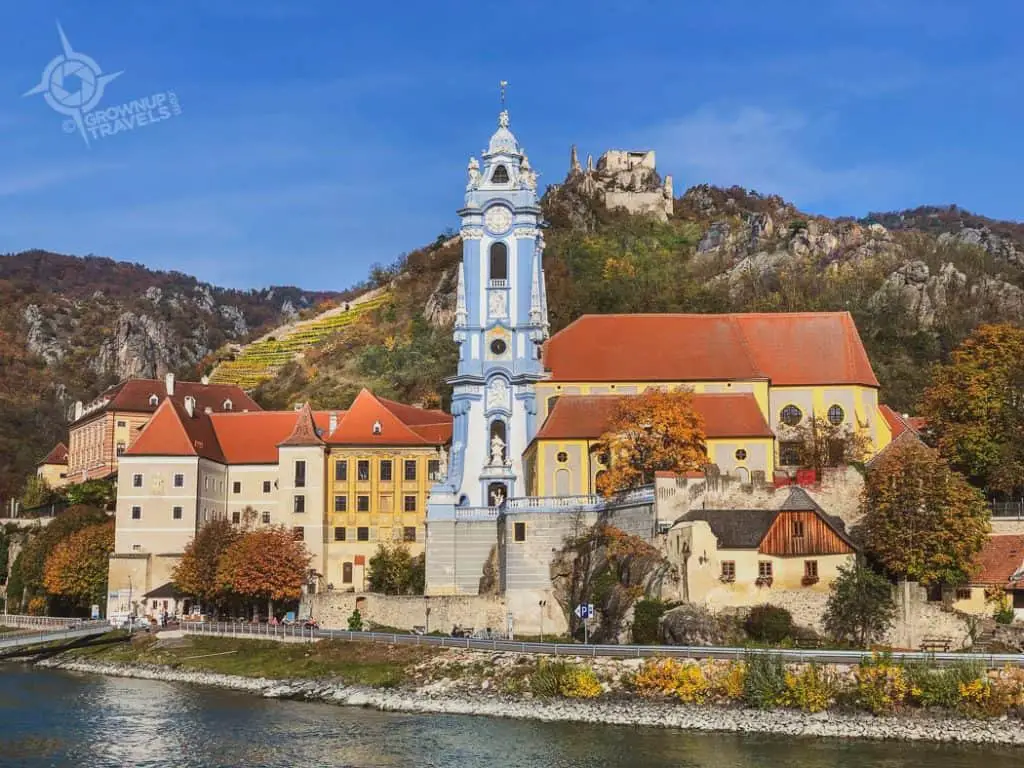
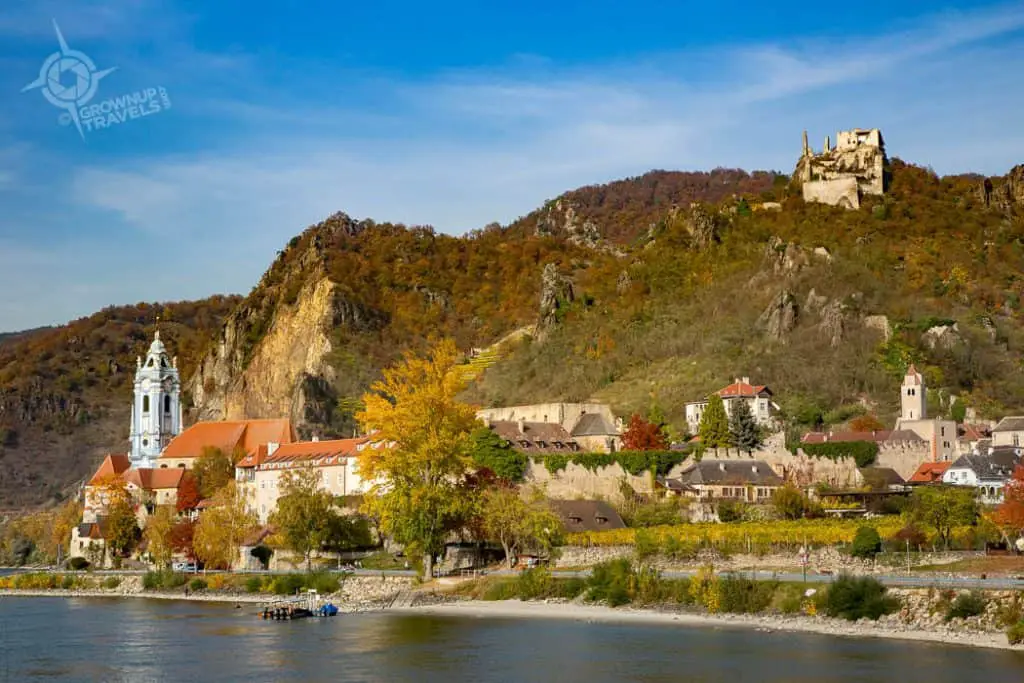
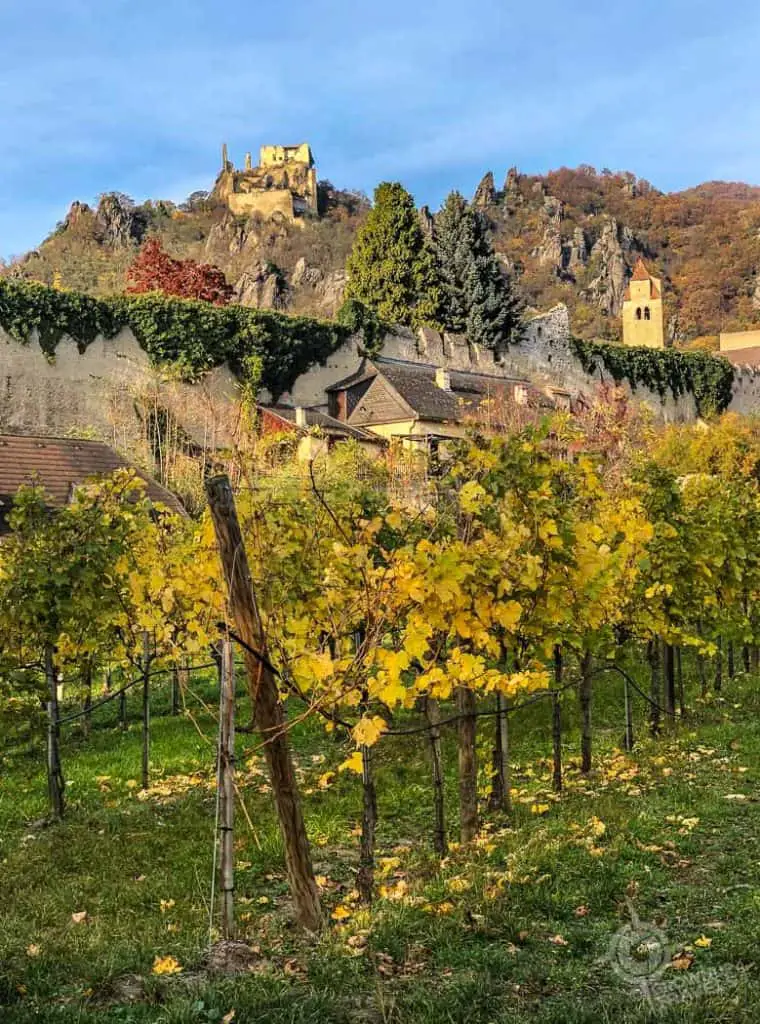
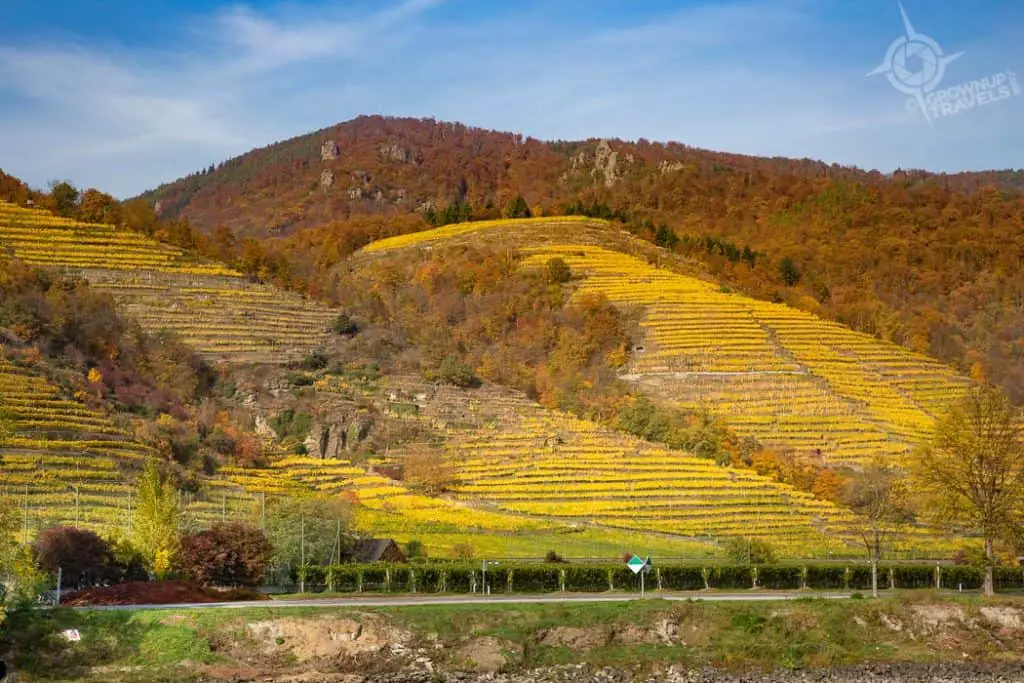
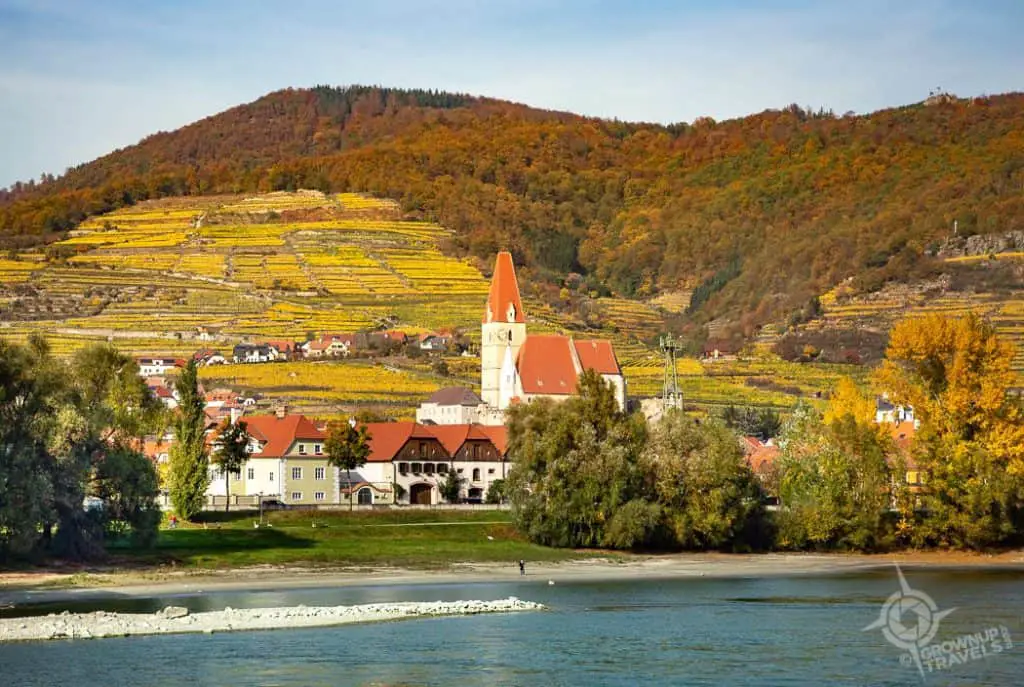
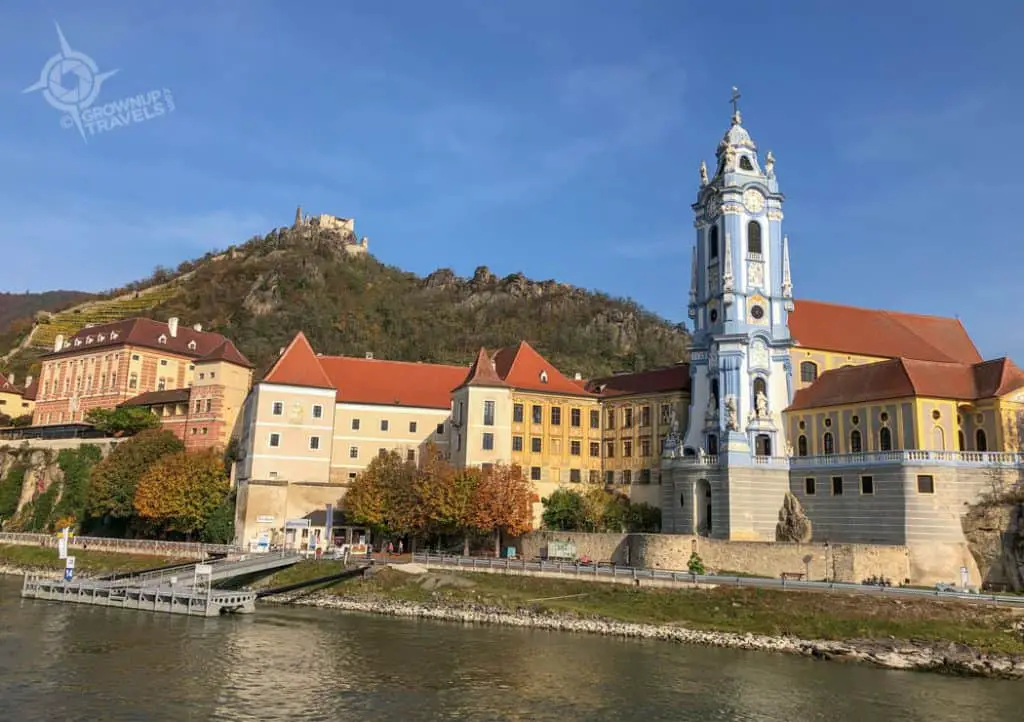
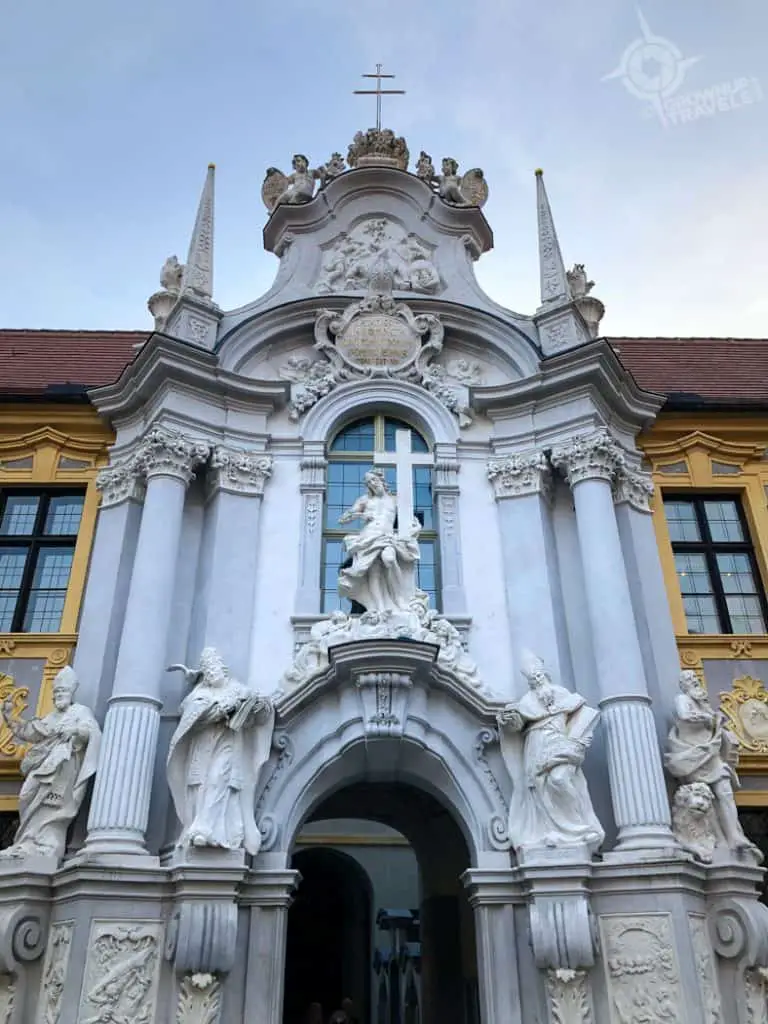
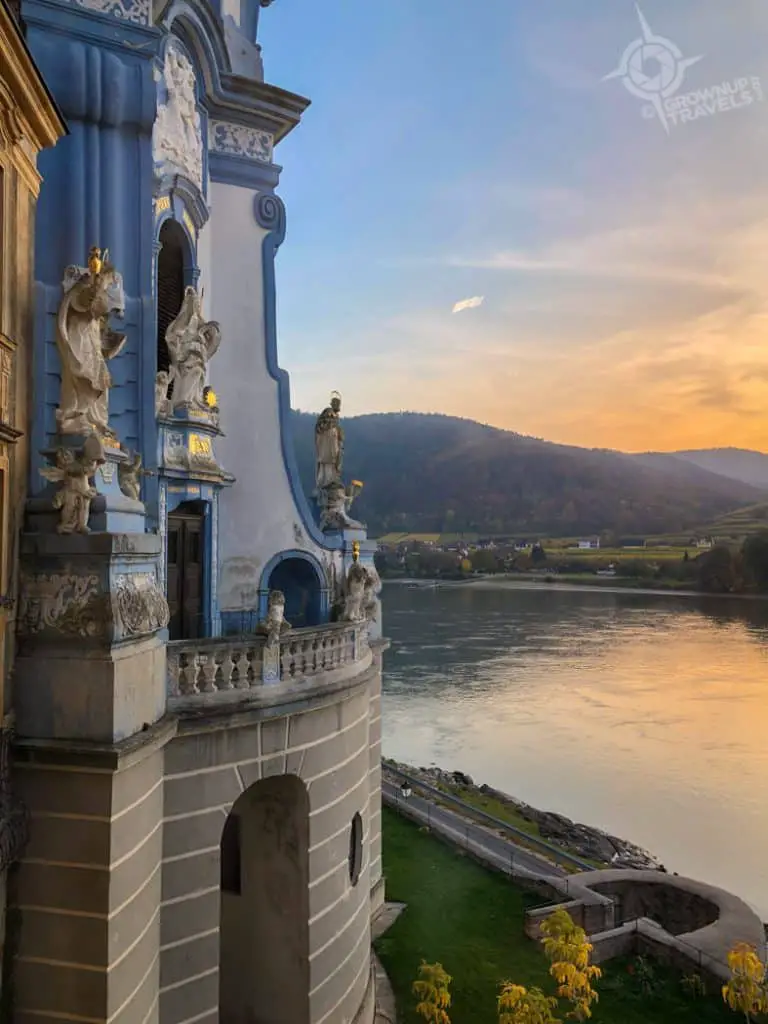
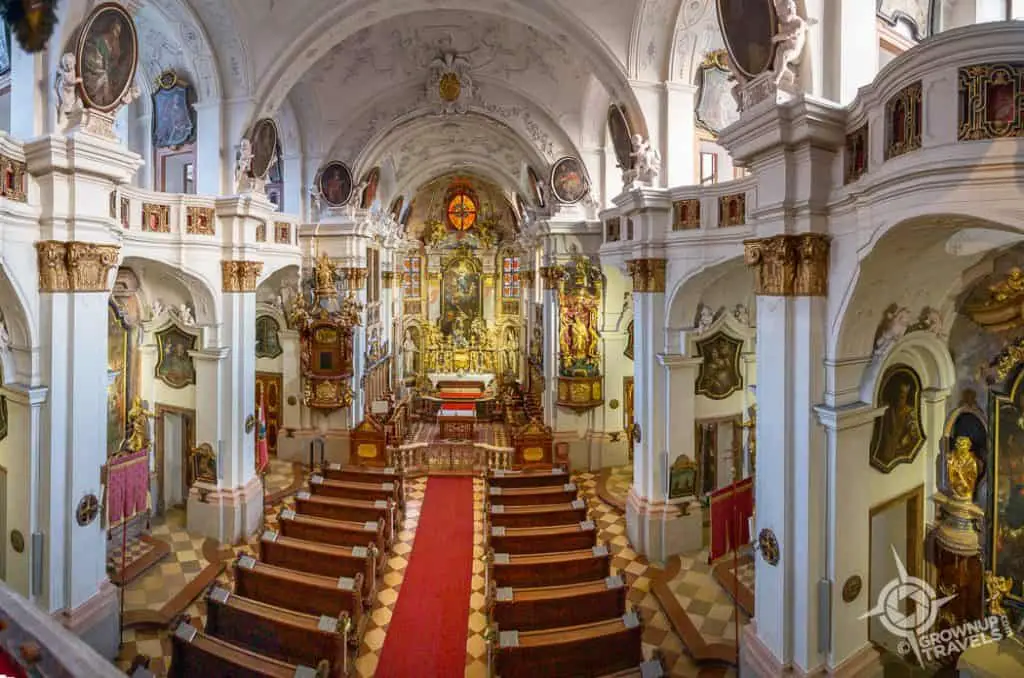
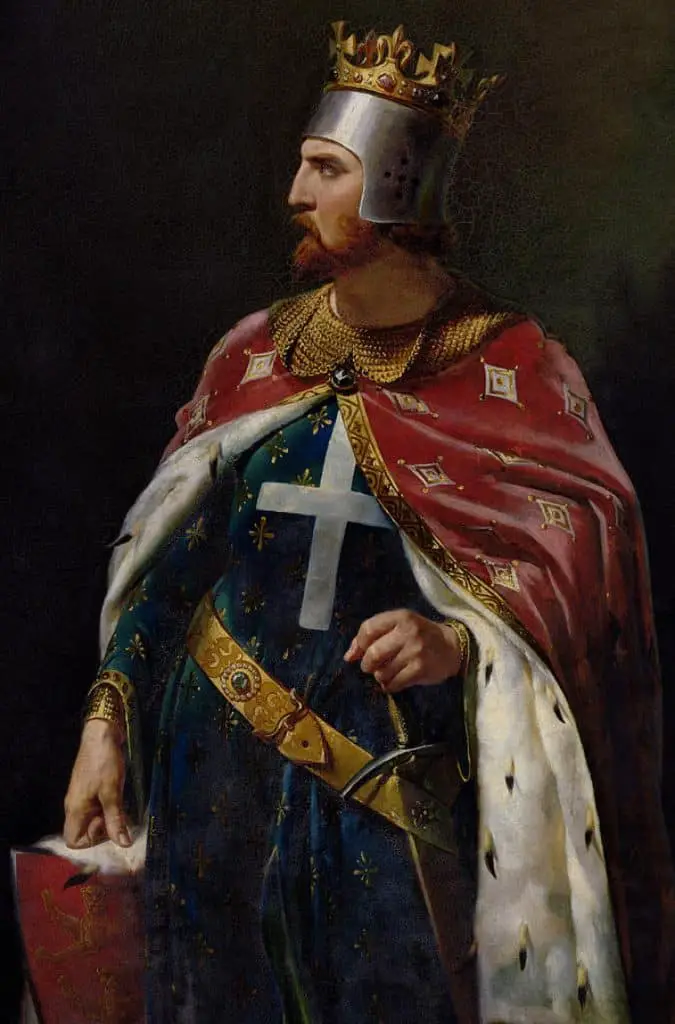


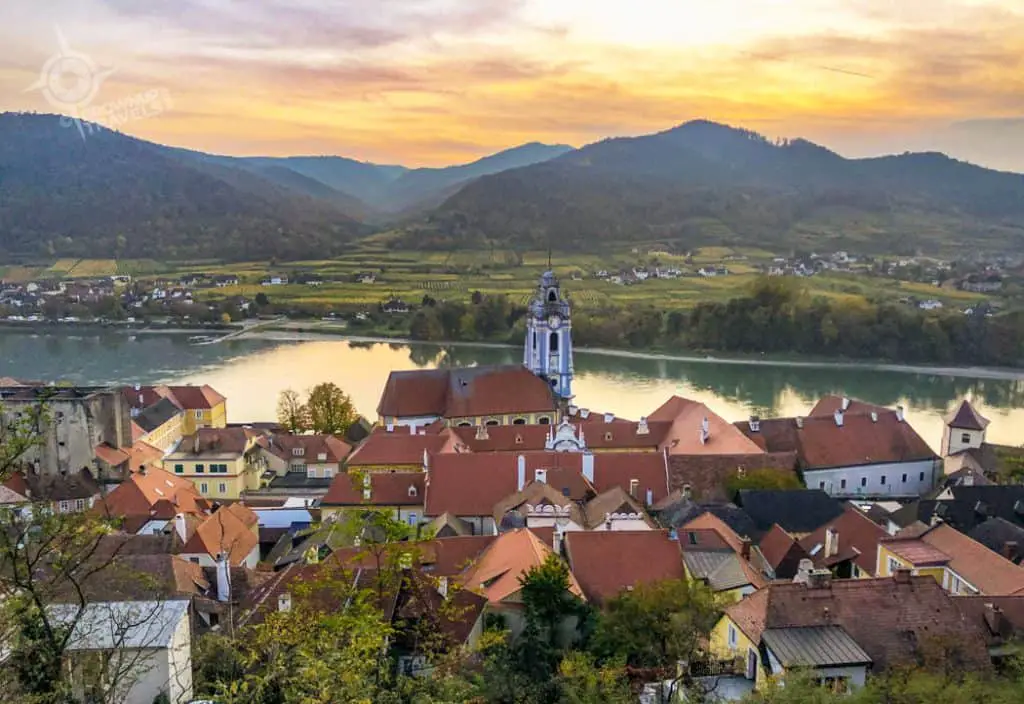
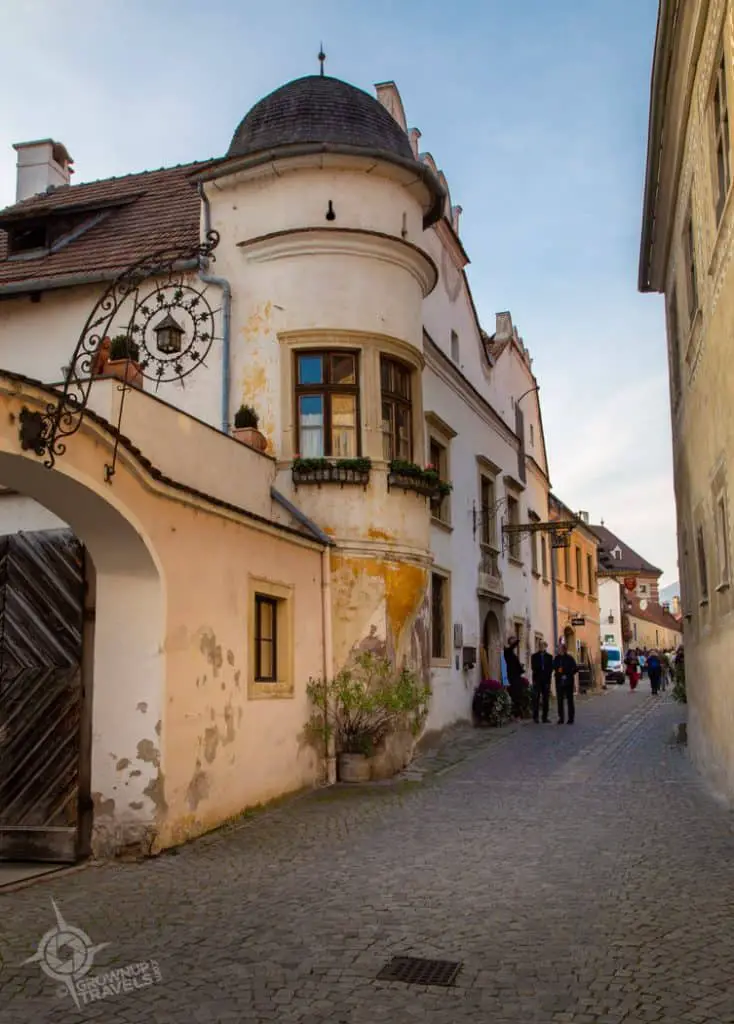

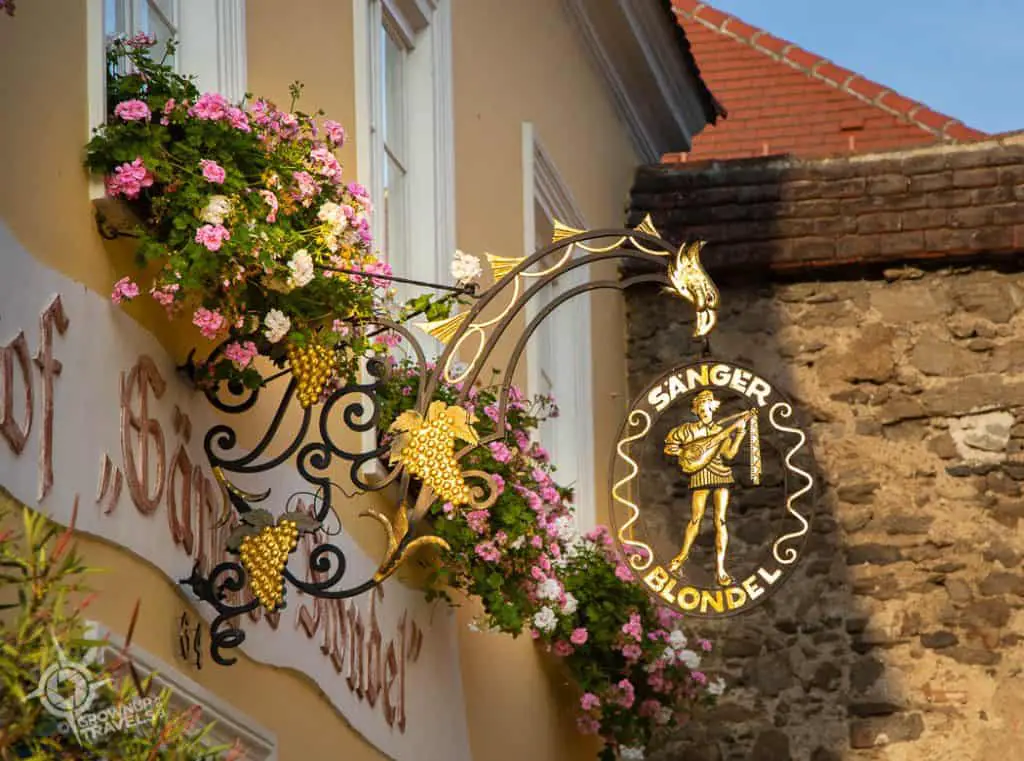
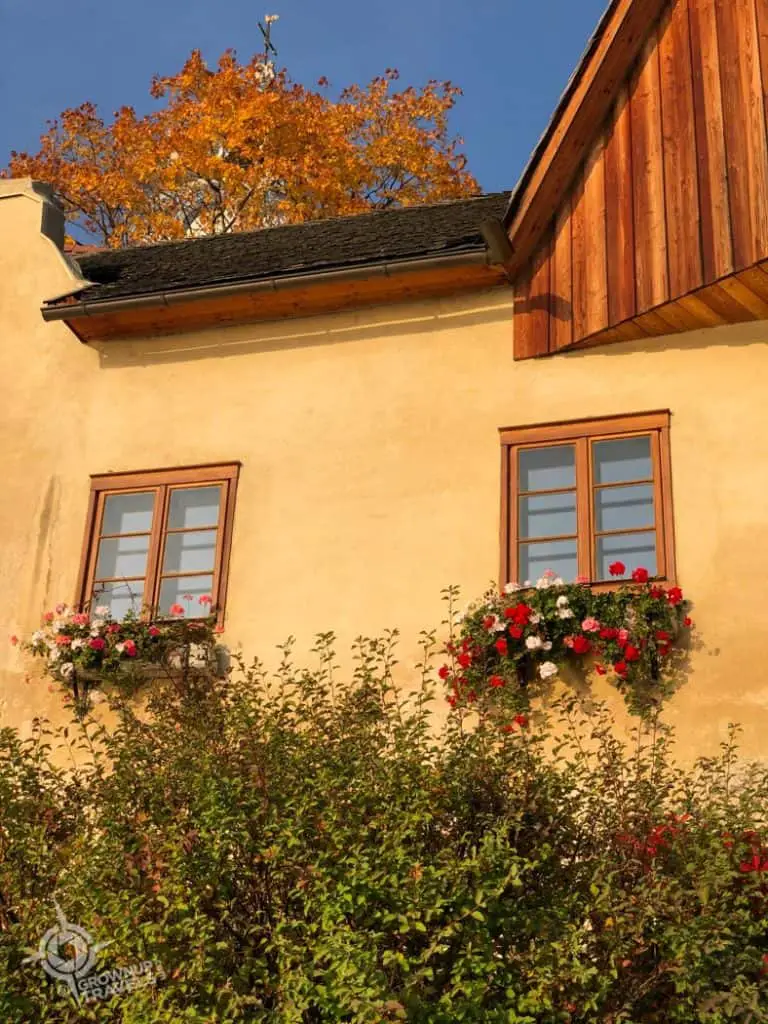
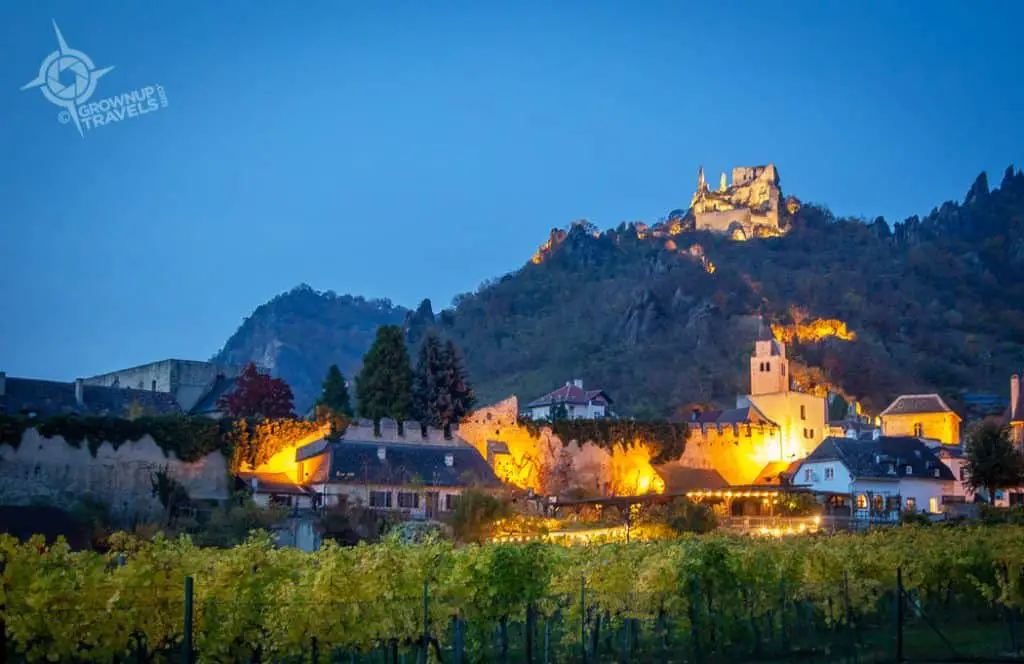
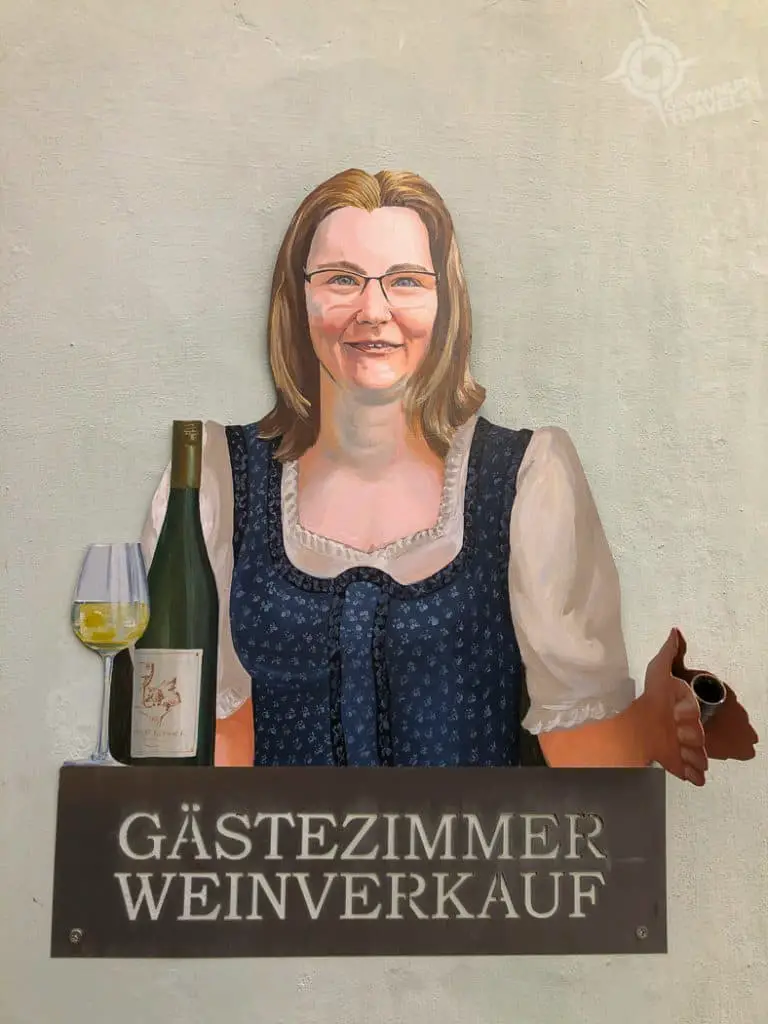
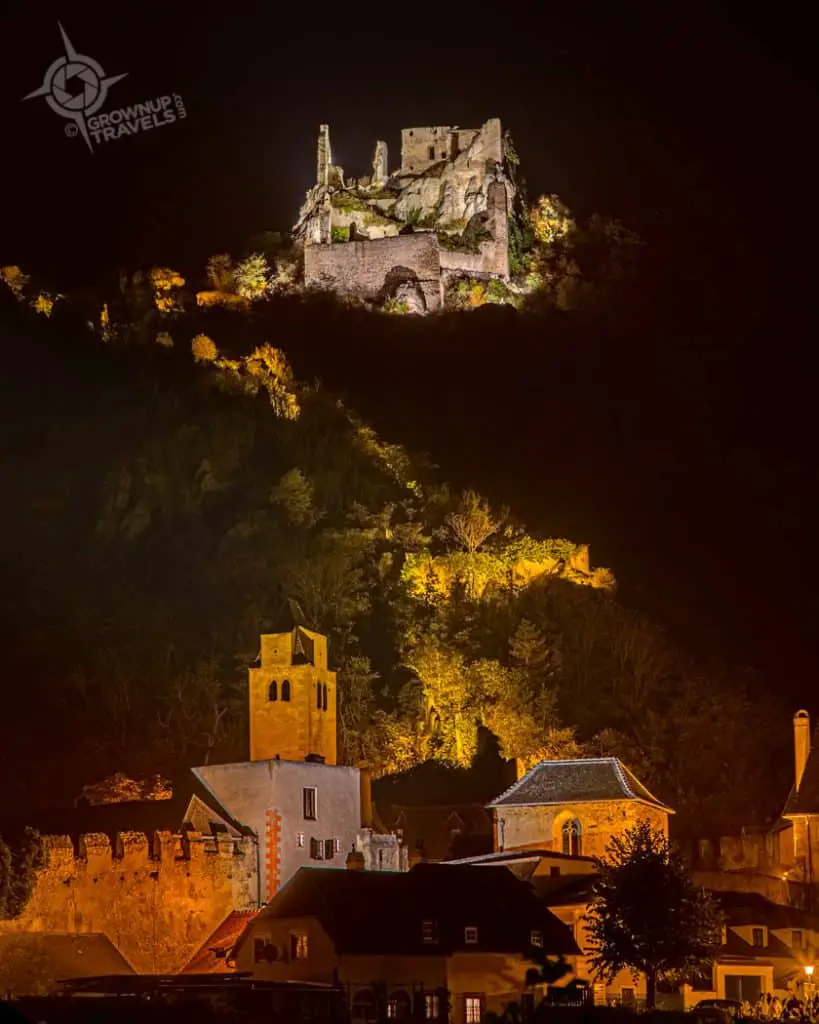
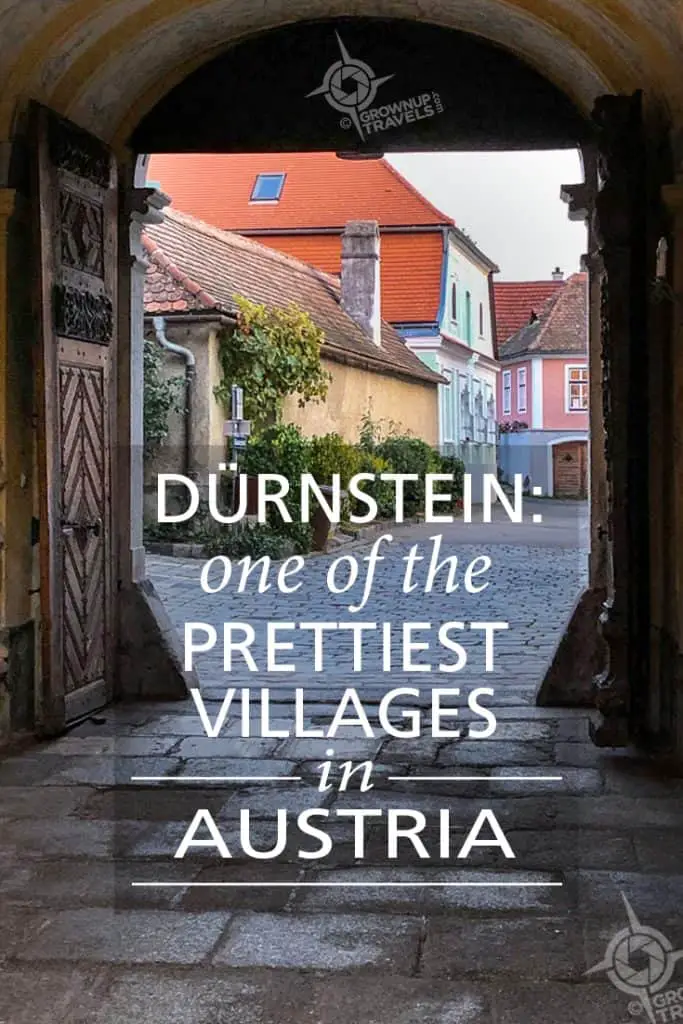




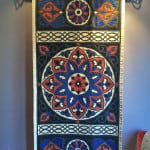





Subscribe and you'll never miss an update!
Join our mailing list to receive the latest news and updates from Grownup Travels. (We keep your email STRICTLY private)
Thank you for subscribing to Grownup Travels!